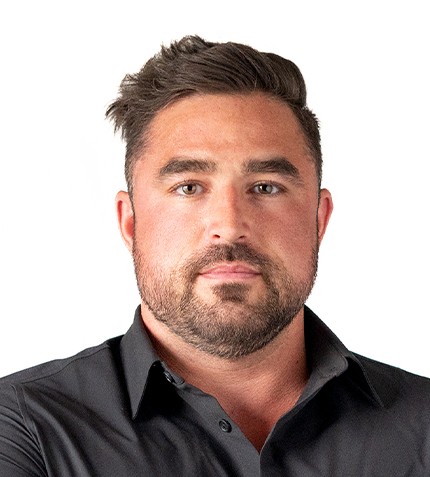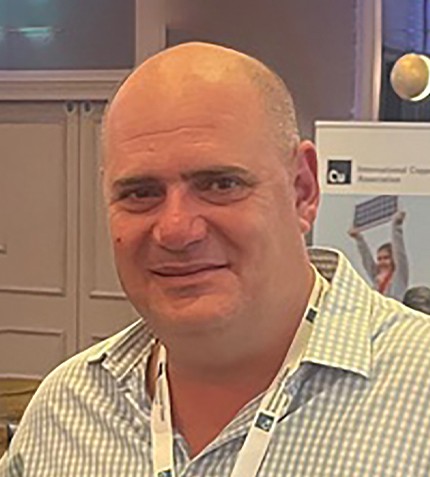Québec’s universities play increasingly prominent role as the mutual benefits of a strong industry interface continue to be recognized. Catherine Howe
RELATED PUBLICATION
ARTICLES FROM THIS PUBLICATION
- Driving Efficiency to Increase Competitiveness: Québec’s Service and Equipment Providers
- The Big Four and the Competitiveness of Québec’s Aerospace Supply Chain
- Banding Together: Québec’s Innovation Ecosystem
- Aerospace in Québec: The Case for an Industrial Policy
- A New Order: Québec’s Supply Chain Reaches Turning Point
- Québec’s Aerospace 4.0: A Solution to Cost Pressures?
- Quebéc Aerospace: Education
- Safety First
Interfacing with Industry: Québec’s Universities Fortify Aerospace Activity

Interfacing with Industry:
The evolving relationship between Québec’s universities and aerospace sector
The quality of Québec’s workforce is cited by many as one of the region’s key advantages. Prominent universities include the École de technologie supérieure (ÉTS), Concordia, McGill, the Polytechnique de Montréal and Sherbrooke. As many industry leaders and skilled workers reach retirement, however, pressure on the talent pool is high.
According to the Comité sectoriel de main d’oeuvre en aérospatiale du Québec (CAMAQ), the Québec Aerospace Workforce Sector Committee, the region will need 10,000 new aerospace employees over the next 10 years and a further 23,000 to replace workers leaving the workforce. “21 years out of the last 30 saw a growth in aerospace manpower needs,” said Nathalie Paré, Executive Director, Comité sectoriel de main d’oeuvre en aérospatiale du Québec (CAMAQ). “Overall, manpower needs have grown by 2.13% annually over these thirty years. Extrapolating from this for the next 10 years, Québec needs 10,000 new aerospace employees and 23,000 to replace workers leaving the workforce.”
CAMAQ’s mission is to ensure the aerospace industry has the right quantity and quality of manpower and to make sure that the training system is responsive to the needs of industry.
With a large number of qualified technicians and engineers retiring, demand for talent is strong, but attracting new students to the industry can be challenging. “Companies are struggling to find the right talent and sometimes have to search internationally for it,” said Jean Wilhelmy, senior vice president for aerospace, construction, services and transportation at Fonds de solidarité FTQ. “There are not enough younger people pursuing the technical skills needed by the industry.”
Meanwhile, companies are increasingly demanding more practical experience from potential new recruits. Universities are therefore having to adapt their models to prepare students for the industry. “Traditionally, education was the province of universities and industry took over the training of these educated students,” stated Professor Stephen Yue, Lorne Trottier Chair in Aerospace Engineering and director at McGill Institute for Aerospace Engineering, McGill University. “However, industry now desires that the university increases its role in the development of what is currently termed ‘graduate attributes’, which includes things like soft skills, as well as training in industry-specific tools, such as specific software.”
Internships and co-op programs are viewed as essential tools to properly prepare students for their first jobs. Organizations such as the Montréal Aerospace Institute (MAI) and the Comité sectoriel de main d’oeuvre en aérospatiale du Québec (CAMAQ) seek to develop talent at the university level and support training in the form of internships and other initiatives. CRIAQ, for example, works a great deal with Mitacs Canada, which funds internships, and also works with McGill on its AeroCREATE program, which seeks to complement students’ curriculum with work or studies in IP subject matter. CRIAQ also recently formed an alliance with the Canadian Aeronautics and Space Institute (CASI) to publicize its work, give students visibility and allow them to interact with the industrial community.
Sherbrooke University, for example, is recognized for its co-op teaching and boasts 1,400 researchers, six institutes, 34 research centers and 50 to 60 additional research groups. “Every year, we have 4,500 work terms to find with over 1,000 different companies,” noted Richard Ares, associate Dean of Engineering and general manager of 3IT at the University of Sherbrooke. “As soon as our students begin university, they are immediately put into practical situations where they must solve problems. We are leaders in applying these programs to Engineering and our projects are much more ambitious than any other Engineering projects in other universities across North America.”
Some moves have been made to encourage companies to take on graduates by compensating them for time spent on training. For example, CAMAQ’s ‘Your 1st Job in Aerospace’ initiative encourages businesses to provide training to new graduates through financial supplements. “Businesses need to provide training on their specific requirements to new graduates, which can lead to lost production time for them as they have to devote limited resources to training,” explained Paré. “The Canadian government therefore provided C$4.2 million for the three-year program and CAMAQ finances 50% of participating companies’ salary costs of the new graduates. CAMAQ has received very good feedback from the industry because it allows them to properly coach new graduates at a lower cost.”
Many of Québec’s universities also work with Mitacs, a national, not-for-profit organization founded in 1999 to design and deliver research and training programs in Canada. Over the past 15 years, Mitacs has supported more than 10,000 research internships and trained more than 19,000 students. Montréal is also home to the Center for Aerospace Professional Education (CAPE), a partnership between McGill and ÉTS, which is the only professional education body for aerospace in Canada, and the second in North America alongside Kansas University.
There is also the Center for Aerospace Professional Education (CAPE), a partnership between ÉTS and McGill and the only professional education body for aerospace in Canada, and the second in North America alongside Kansas University. In addition, six Québec universities have combined to form the Montréal Aerospace Institute (MAI), created to address the aerospace industry’s future needs for engineering highly qualified personnel (HQP).
Innovation finds new roots
The advantages of close industry ties extend well beyond student benefits, attracting financial support for university research programs and providing breakthrough innovation and early-stage development capabilities to companies. Many of Québec’s universities have longstanding relationships with industry, which now widely acknowledges universities to be valuable partners in early-stage R&D and a primary source of breakthrough innovation.
University spin-offs are increasingly finding success, in high demand due to their possession of a specialized capability or first-in-class technology, and the universities themselves are increasing their capabilities for higher technology readiness levels (TRLs) to capture more value. By playing a more integral role in the later-stage development of technologies, they are better able to play a significant role on research platforms alongside commercial entities.
Particularly developed along these lines is Sherbrooke University. “We are what we can call an "integrated chain of innovation”,” commented Richard Arès, associate Dean of engineering & general manager of the university’s Interdisciplinary Institute for Technological Innovation (3IT). “In the world of electronics, robotics and information technology, we cover the whole chain of TRL 1 to 9. Therefore, we can be partners with industry from the very early work all the way to market.”
Sherbrooke University is particularly well regarded by industry for its open IP culture and entrepreneurial environment. The academic institution has created more than 70 spin-off companies in the last four years and its Interdisciplinary Institute For Technological Innovation (3IT) accelerates technology transfer in several sectors, covering technology readiness level (TRL) 1 through TRL 9.
Equally notable are the large number of startup companies born out of the university’s research. “In terms of entrepreneurship, the University of Sherbrooke has the highest number of spin-offs by far,” highlighted Arès. “We have a company-creation accelerator (ACET), an organization dedicated to helping startups launch, progress faster and have a bigger chance of success through funding, networking, coaching and training. For some time, the Québec ecosystem created about a dozen companies a year. This organization has created more than 70 companies in the last four years, entering the leagues of spin-off universities like Ryerson University and UBC.”
Sherbrooke University’s target is to multiply its level of partnerships with industry by 10.
Funding and support
As well as securing more practical experience for students to work on ‘real world’ solutions, by securing closer ties with surrounding companies universities also benefit from greater access to funding. By positioning themselves as partners to industry, universities are more likely to have the visibility to partake in externally-funded research programs, even if the funding is not provided by industry. “Industry contributes a relatively small amount to funding for research, with government-funded research bodies typically providing around 80% of the funding,” said Louis Laberge Lebel, assistant professor at Polytechnique Montréal’s Department of Mechanical Engineering. “Companies are usually focused on short-term cost savings, meaning the scope of research is quite narrow. It would be beneficial if companies were more open to partnering with universities on fundamental research that could lead to the next big technological advances.”
As well as working for more than 10 years on a large project with Safran towards the goal of making parts for the LEAP-X engine, Polytechnique Montréal was also involved in the production of a fire-resistant carbon fiber composite by-pass duct for aircraft engines with P&WC. The university is also working on several projects with CRIAQ, CARIC and NSERC.
Québec’s universities will play an increasingly prominent role in the province’s aerospace sector as the mutual benefits of a strong industry interface continue to be recognized. As industry needs also evolve, universities will have to adapt in order to attract students and properly prepare them for graduate roles. With the support of industry associations, the relationship between university and industry will continue to tighten to the advantage of the talent pool.











